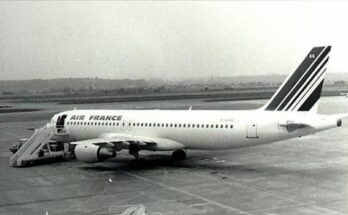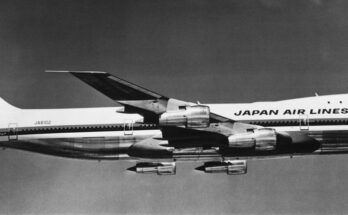
On Sunday, June 3, 1973, the aviation world witnessed a devastating disaster at the Paris Air Show held at Le Bourget Airport. The event, meant to showcase the world’s most advanced aircraft, turned into a scene of horror when the Soviet Union’s supersonic jet, the Tupolev Tu-144, crashed during a demonstration flight. The crash not only killed six crew members on board and eight people on the ground but also marked a turning point in the race for supersonic passenger flight between the USSR’s Tu-144 and the Anglo-French Concorde.
Background of the Tu-144
The Tupolev Tu-144 was the Soviet Union’s answer to the Concorde. Often dubbed the “Concordski” due to its visual resemblance to its Western counterpart, the Tu-144 was a delta-winged, four-engine supersonic transport (SST) developed by the Tupolev Design Bureau. The aircraft first flew on December 31, 1968, beating the Concorde’s maiden flight by two months, which was a point of national pride for the USSR.
The Tu-144 was intended to be a bold statement of Soviet technological prowess. By the early 1970s, both Concorde and Tu-144 were undergoing test flights and public demonstrations, vying for international recognition and commercial success.

The 1973 Paris Air Show
The Paris Air Show is the world’s oldest and most prestigious air and space exhibition. In 1973, the airshow drew global attention as both the Concorde and the Tu-144 were scheduled to perform demonstration flights. This was seen not just as an exhibition of engineering, but as a symbolic contest of Cold War superiority.
On June 3, the second-to-last day of the show, thousands of spectators gathered to witness the flight of the Tu-144. The aircraft involved in the crash was the prototype Tu-144S, with registration number 77102. The flight was crewed by a highly experienced team, including test pilot Mikhail Kozlov and co-pilot Valery Molchanov.
The Flight and Crash
As the Tu-144 took off for its demonstration, it initially performed smoothly and with dramatic flair. It flew past the spectators in a high-speed pass and then began a steep climb. What happened next is still debated, but during the ascent, the aircraft suddenly pitched upward sharply, stalled, and then appeared to attempt a recovery by diving steeply.
In its dive, the aircraft broke apart in mid-air due to the extreme aerodynamic stresses. Large sections of the aircraft, including wings and fuselage fragments, began to rain down over the suburban village of Goussainville, several miles from the airport.
All six Soviet crew members were killed instantly. On the ground, eight residents of Goussainville, including children, also perished, and several homes were damaged or destroyed. The tragic scene left spectators horrified, and the crash cast a dark shadow over the remainder of the airshow.
Theories and Investigation
The official Soviet explanation at the time cited pilot error and possibly miscommunication with French air traffic controllers. However, alternative theories have persisted for decades.
One prominent theory suggests that the Concorde, which had flown earlier, was airborne again—possibly with a Mirage fighter jet nearby photographing the Tu-144 in flight. Some believe the Soviet crew may have been surprised by the presence of the Mirage, possibly trying to avoid a collision or attempting a last-minute maneuver to outshine the Concorde.
Others claim the Soviets were under pressure to perform aggressive maneuvers to demonstrate the aircraft’s superiority, leading to overextension of the Tu-144’s flight capabilities. This is supported by the fact that some of the maneuvers attempted during the demonstration flight were not part of the original flight plan and exceeded the aircraft’s operational limits.
Despite these suspicions, the precise cause of the crash remains officially unresolved due to limited cooperation between French and Soviet authorities during the Cold War.
Aftermath and Impact
The crash was a major blow to the Soviet aerospace industry and to the Tu-144 program in particular. Although the Tu-144 eventually entered limited commercial service, its reputation never recovered. Only 55 passenger flights were conducted before the aircraft was withdrawn from service due to safety concerns and poor reliability.
In contrast, the Concorde, while not without its own problems, continued to fly successfully for nearly three decades. The Tu-144’s failure to establish a sustainable presence in the commercial aviation market symbolized the difficulty of translating Cold War-era competition into practical civilian success.
Legacy
Today, the Tu-144 crash at the 1973 Paris Air Show serves as a sobering reminder of the risks inherent in experimental flight and political rivalry. The event underscored the intense pressure placed on test pilots and engineers to demonstrate not just technical achievement, but national prestige.
Several Tu-144 aircraft are preserved in museums, where they remain as artifacts of a bygone era—futuristic in appearance but haunted by a legacy of tragedy and dashed ambition.
The Paris Air Show continues to be one of the leading events in global aviation, but the memory of that Sunday in June 1973 lingers, a cautionary tale of ambition, competition, and the high cost of failure in the skies.


